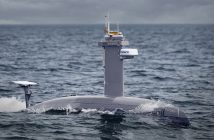Everything started with the discovery of the Charge Coupled Device (CCD), in 1969, by George Smith and Willard Boyle from Bell Labs. Their discovery, initially thought of being used as a memory device, proved to be so valuable to the imaging industry today, that they were honoured with a Nobel Prize for Physics in 2009, 40 years after their invention.

Interestingly enough, the CCD principles are based on the photoelectric effect, which were explained by Albert Einstein back in the early 1900-es, for which Einstein too received his Nobel prize in 1921, not for his theory of relativity, like many would have believed.
Photoelectric effect explains how light energy (photons) are converted into electrical signal in the form of free electrons. You may have seen this effect demonstrated in some National Geographic or science museums souvenir shops, a glass sphere within which a free floating cross hangs, made of silver foils. When you turn a strong light shining onto this glass sphere, the little foil-cross starts spinning in the opposite direction of the light. Light has enough energy to eject electrons from the silver foil collectors so that they create action-reaction effect forcing the cross to spin.
Something similar is happening in todays imaging chips, be that CCD or CMOS. The base material of an imaging chip is silicon, a semiconductor that “decides” it’s conductive state based on electric field around it. The name semiconductor in electronics indicates exactly that – a material that sometimes acts as a conductor (like copper) and sometimes as insulator (like rubber). When light photons “hit” the silicon area (which we call picture element – or short “pixel”) it frees up electrons proportional to the light intensity. The more light you have – the more electrons will be ejected from the silicon pixel. This is basically how light information (a scene projected by a lens onto the surface of the imaging chip) is converted into electrical signal. This is a very useful process for converting light information into electrical information.
CCD chip can hold the amount of charges (electrons) by manipulating voltage near the pixel. When a voltage is applied to the area, it becomes like a magnet for the electrons which tend to stay where there is stronger voltage. When a next door pixel gets the same voltage applied to, and the active pixel starts loosing the voltage, the charges get attracted to the higher voltage and they get transferred to that pixel. This is, in a very simplistic form, charge coupled transfer of electrons. Or, in practical terms, transferring of the electronic image representation from the chip out to the read-out stage, where electrons are converted to voltage, which then make up the video signal.
The inherent problem of this process is that electrons are also produced in the silicon by the temperature surrounding it. The laws of physics are such that state any temperature above absolute zero (-273 C) can generate (eject) electrons in the silicon. The higher the temperature – the more thermally generated electrons. This is the biggest problem in electronics in general – and we call it “noise”. Noise can only be avoided at absolute zero which is not a temperature you can achieve in your kitchen, but only exists in labs.
From the information point of view – noise is unwanted signal because it does not represent the actual image information projected on the chip. Even at normal room temperature there are thermally generated electrons, let alone in the middle of a sun baked hot area. The hotter the environment where cameras are installed is – the more noise is generated by the temperature itself. Every three degrees of temperature increase doubles the noise. This is especially noticeable in darker areas in a picture, which is unfortunately the most common area of interest in surveillance applications.
For the above reasons, cameras used in astronomy for example are cooled down with special coolers to more than 45 C below the ambient temperature. The cooler the imaging chip is, the better details will see in low light, and astronomy certainly looks for even the tiniest speckles of distant stars, hence noise can easily mask such a detail. In CCTV however it is not practical to cool cameras this way, although attempts have been made by some manufacturers for cooling their cameras with Peltier solid state coolers. This, unfortunately, brings the price up and such cameras have not become popular.
There is however yet another factor that influences the noise dramatically, not just the temperature, but the pixel size.
So the trick is to find the best compromise of pixel and chip sizes. We would like to have imaging chips with more megapixels, but we don’t want to increase the chip size too much as it is expensive. Yes, we want to fit as many pixels as we can in the smaller chip, but this has it’s practical limit too. This is one of the biggest problems with current imaging chip technology. You can only fit so many pixels in a tiny area such as your little fingernail chip size.
Pixels are like little buckets collecting electrons. As we described earlier, electrons are generated by the light projected from the lens, but also from the temperature. If the buckets are larger, then electrons produced by the light information will be much more relative to the thermally generated electrons. If the buckets are smaller, the light produced electrons will be much less relative to the thermally generated electrons which will be seen as more “noisy” picture.
With today’s technology, a “good size” pixel is around 6 x 6 micrometers (um), which is typically what you will find on most good Digital SLRs (DSLRs). But in smaller compact cameras these pixels get reduced to 1.5 um. If you compare the area in square micrometers – this is 36 squared micrometers compared to 2.25 squared micrometers, a ration of 16 times. And just for your visual comparison, an average human hair diameter is around 100 micrometers. So in a cross-section of a hair (7850 square um) you could fit 3500 pixels of a compact camera chip. It is not difficult to understand why a DSLR produces much more superior images to a little compact digital camera. There is huge difference in their size, and the practicality of carrying a full blown DSLR with huge lenses, compared to a little pocket size camera, for a “small” difference in quality. So here is another compromise we have learnt to live with.
The technology is at a stage where even smaller pixels are possible, but noise will be increased too. Noise can not be avoided. Furthermore, there are optical consideration we haven’t even touched upon, where smaller chips would require better lenses, because lenses have their limits too. The smaller we go with the pixels, the more demand we put on the lens quality. This, unfortunately, has been neglected by many, especially in CCTV with the switch from SD resolutions (768 x 576) to megapixel resolution on the same chip size (1920 x 1080).
Certainly, if it was only for the noise, imaging chips can be made bigger with larger pixels, but their manufacturing price would grow exponentially. Silicon chips are made out of a circular silicon wafer, using the very expensive electronic micro-lithography process, and the bigger the chips are, the lesser of them will be made out of the same silicon disk.
Bigger chips require bigger lenses, which are made of more glass and are more complex and more expensive. Bigger imaging chips also require more power for proper functioning. In photography, chip sizes today can be anything from 10 megapixel (MP) on a 4/3” area, up to 50 MP on 49 x 37mm area. In CCTV, we have anything from a standard definition chips with 768 x 576 pixels (practically 0.44 MP) on a 1/6” area, up to 16 MP (4872 x 3248 pixels) on a 36 x 24mm chip area.
Just for a comparison, the very first CCD chip camera “Mavica” (acronym from Magnetic Video Camera), released by Sony back in 1981, was using a chip with only 570 x 490 pixels.
Perhaps more important for CCTV and surveillance applications is the number of images a chip can produce per second. One thing is to have a photographic camera where one click once in a while produces one megapixel picture, and another thing is to have a surveillance camera streaming 25 images each second continuously for the illusion of “live motion”. This is just too demanding for the electronics of the larger imaging chips. Now, in special scientific applications today, it is possible to have even thousands of images per second produced by a megapixel chip, but cameras designed for such a purpose are very special, usually made just for experimental purposes only, and their cost is prohibitive in CCTV.
So, again, we have to learn how to find the best compromise. Currently, for “live” motion applications that require “live” motion the current CCTV “norm” would be the High Definition (HD) TV standard, with it’s 1920 x 1080 pixels, which equals to 2.1 MP. This is in fact the latest broadcast TV standard now globally accepted. It is technically possible and economically affordable. The HD standard uses megapixel cameras, although we are really talking of “only” two megapixels, but this is five times more pixels than a PAL standard, and the current technology is such that live stream of 25 images/second is easily achieved, which is what television is all about.
On the other hand, certain applications would be happy to use one or two images per second with 16 MP cameras for example. Having just one 16MP camera instead of 8 HD (at 2MP) might be more practical for some, like when capturing vehicles’ number plates for example. Others would insist on seeing every single movement of a person, which would require a chip that can produce live motion stream, even at 2MP.
And just to throw in yet another variable in this discussion, the display size and resolution is also important.
If a photographer for example wants to show his photographs on a computer, with a display of 2560 x 1600 pixels (one of the largest display resolutions in the computer industry today) there is practically not much sense to use a camera with a chip that produces much more pixels than 4MP (2560 x 1600) for example. Printing the same pixel size image on a post-card would not require any more pixels. It is a different story if that same photographer for example wants to print a nice A3 size photo of the same shot. He may require higher resolution image (more pixels) but only if he can print such an image on a high quality printer and paper. Printing a high pixel count image on a plain paper, even if that is A3 format, doesn’t make much sense. There are many theories you can find on the web explaining and defining the correlation between printer’s dots-per-inch (DPI) resolution, pixel-per-inch (PPI) and pixels on good quality photo paper, but in essence around 300 PPI is what you would get from the better ink-jet printers (PPIs should not be confused with ink-jet’s DPIs). This means an A3 size (420x297mm) photo, converted to inches would be 16.5 x 11.7 inches, which would require a digital photograph of around 4950 x 3510 pixels (around 17MP) for a very good and detailed reproduction.
So, as it can be seen from this example, the target display size and it’s pixel capability is very much important factor in deciding how many megapixels you may require from your camera. When displaying images or video on a computer we should be able to electronically zoom-in, and this allows to make an efficient use of more megapixels than the screen can handle. Otherwise, again, it doesn’t make sense to have a 16MP image displayed on a HD resolution screen (1920 x 1080) as the camera image outperforms the resolution of the display.
There are now even products where intelligent combination of multiple HD cameras (producing “live” motion) add up to a larger 51 MP camera array. But even better, not only pixel count is increased flatly for the whole image, but the increase of pixels is more for objects being further away in distance, thus allowing for digital zooming in areas that are further away.
Human ingenuity and progress never stops. But all of the above has a certain price tag, and this plays an important role in the camera choice decision making.
There is no single answer for your best camera choice.
It all depends on what do you want to achieve and how much are you prepared to pay.
Cheap is most often expensive in the long run, but nobody wants to pay more than what they have to.
Like in life, it’s either learning to optimise your choice for the given budget, or perhaps being smart and allowing a budget for the desired end result.
Technology has always progressed and always will.
Author: Vlado Damjanovski
This article originally appeared in The Australian Security Magazine – Subscribe today!





